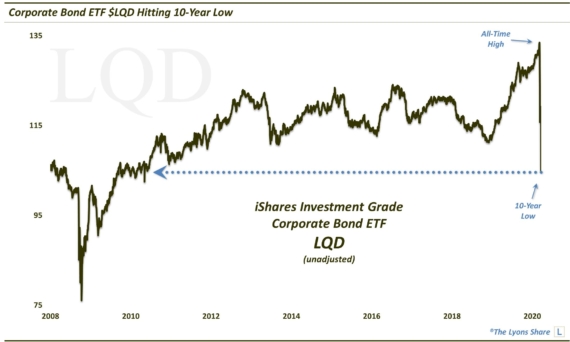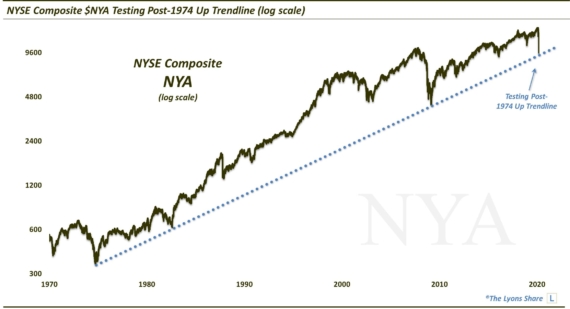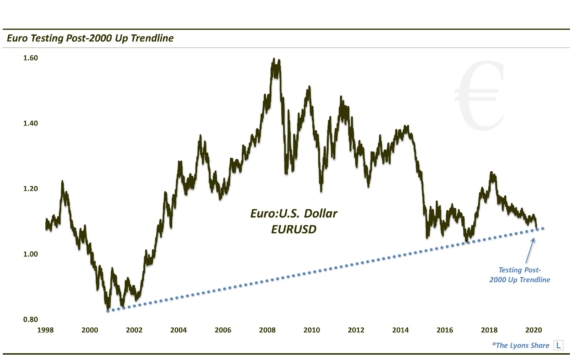The B.R.I.C.’s Are Rebuilding

After languishing for most of the decade, the B.R.I.C. markets are finally looking constructive again.
It’s no secret that once a fad has reached widespread, mainstream awareness, it’s popularity trajectory is likely to head south. The dynamic has been true from tulip bulbs in 1630′s Holland to, gulp, Pokemon(?) today. Nowhere is the phenomenon more clearly demonstrated than in financial markets in which prices are essentially a measure of popularity, i.e., demand. Thus, when we witness parabolic price gains along with ubiquitous financial media coverage, one’s fad-o-meter should start going off. Mind you, it is difficult to know exactly when a fad will run dry – and, in fact, fighting the parabolic price gains can be extremely hazardous. However, there are a few potential, albeit anecdotal, signals that may clue us into the coming of the end.
One warning sign is the widespread adoption of an acronym in distinguishing a group of securities or markets. One obvious contemporary example is F.A.N.G. This acronym has become so commonplace that we don’t have to even identify the 4 stocks included. And while the F.A.N.G. phenomenon has yet to run its course, one can be quite confident that it will not end well.
That leads us to another well-known and ill-fated (at least for a time) acronym: B.R.I.C. Most market participants will recognize this acronym as standing for the 4 emerging markets of Brazil, Russia, India and China. And while the acronym was first coined back in 2001 by Goldman Sach’s Jim O’Neil, it did not reach widespread popularity until the mid-2000′s when the markets had caught fire.
Last decade’s B.R.I.C. episode also brings up another anecdotal fad-ending warning sign: the launching of an ETF. Indeed, the industry is notorious for launching ETF’s at the height of a market’s popularity only to see interest immediately fizzle out. We don’t necessarily blame them as they are responding to public demand. But the launches (and closings, for that matter) have been uncannily ill-timed and certainly make for poor optics for the ETF family.
The launch of the first B.R.I.C. ETF is no exception. On November 12, 2007, following a 5-year 500% rally in the collective B.R.I.C. markets, iShares launched the first ETF based on the B.R.I.C.’s, the iShares MSCI B.R.I.C. Index ETF, ticker BKF. Less than a month later, BKF closed at an all-time high of 62.45. In 9 years since, BKF has never again approached that level.
That brings us to today’s Chart Of The Day and the point of this post which is – the B.R.I.C. markets are beginning to rebuild. Specifically, we took the main stock indices of the 4 markets involved and created an equally-weighted composite from them. This B.R.I.C. Composite also topped out back in November 2007-January 2008. It would subsequently lose 2/3 of its value in less than a year and would not challenge its highs again until February 2015. After being rejected at the former highs, the Composite dropped into January of 2016 before beginning its ascent again.
In undergoing another brief failure at its former highs in April, the B.R.I.C. Composite arguably traced out a bullish pattern known as a “cup-&-handle”. We have written a few times about this pattern which involves a “cup”, or a long base between peaks (e.g., 2007-2015), followed by a shallower pullback, or “handle” (e.g., February 2015-April 2016). The resolution of this pattern is generally bullish and often explosive.
And indeed, the B.R.I.C. Composite has now forcefully broken out to new all-time highs for the first time in about 9 years.

The breakout actually took place in July but has really accelerated here in the past few weeks. We realize that the first thing that many folks will (rightfully) point out is the “currency effect” at work here. That is, the following markets included in our Composite are priced in the local currency of their home countries.
- Brazil Bovespa Index
- Russia MICEX Index
- India NSE Nifty 50 Index
- China Shanghai Composite
As these countries’ local currencies have been particularly weak in recent years versus the dollar, the prices of their local stock indices will obviously be inflated. That is why, for example, the iShares BKF ETF is still well below its 2007 highs.
That said, it is not all currency effect at play here. In fact in the 2 months since the July breakout in the Composite, the Dollar Index has actually fallen. Therefore, there is genuine strength being exhibited by these 4 emerging markets, as we have pointed out recently in reference to Brazil and Russia, in particular. Additionally, some of the the dollar-denominated ETF’s have been rallying sharply for much of the year, including the iShares Brazil ETF (EWZ) and the iShares India Nifty 50 ETF (INDY).
What is the point? Well, despite the fact that it may be difficult for U.S.-based investors to access an investment basket that mirrors our B.R.I.C. Composite, it is still worth noting the recent strength. In particular, it is worth noting the new all-time high milestone it achieved after nearly 9 years of floundering. With Russia and India at or near all-time highs and Brazil breaking through significant resistance levels, these B.R.I.C. markets appear to legitimately be back – regardless of the behavior of their currency.
Whether this trend will continue or not, we do not know. However, the group appears to have gotten over the hangover associated with the over-exposure it received in 2007. And if the cup-&-handle assessment is correct, this up-leg could be just the beginning of something much bigger.
Time will tell, but this re-building of the B.R.I.C.markets is evidence that it’s not just the U.S. stocks leading the global rally anymore.
_____________
More from Dana Lyons, JLFMI and My401kPro.
The commentary included in this blog is provided for informational purposes only. It does not constitute a recommendation to invest in any specific investment product or service. Proper due diligence should be performed before investing in any investment vehicle. There is a risk of loss involved in all investments.


